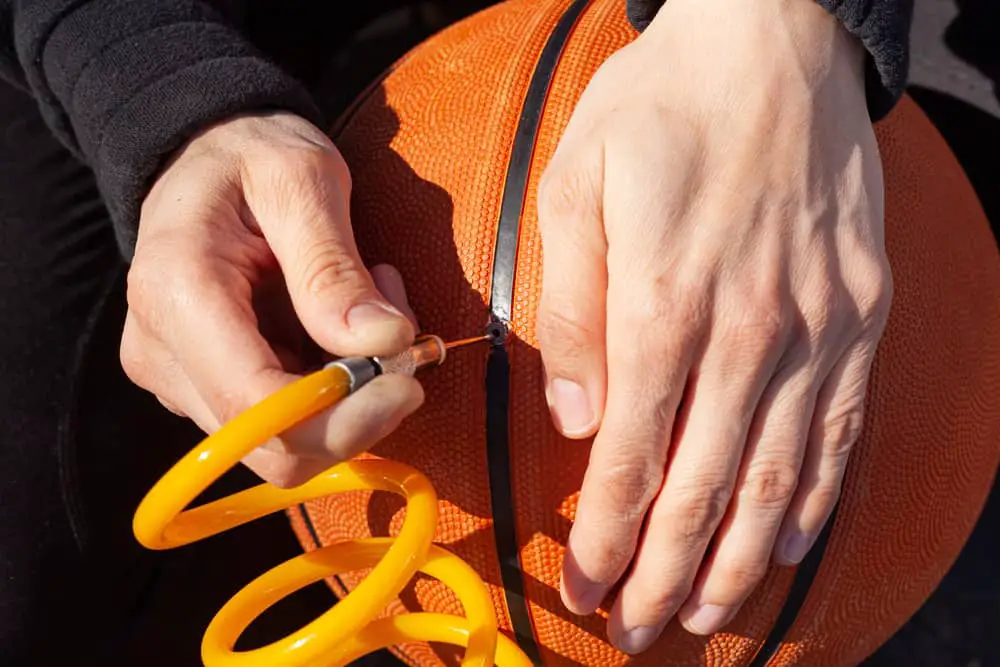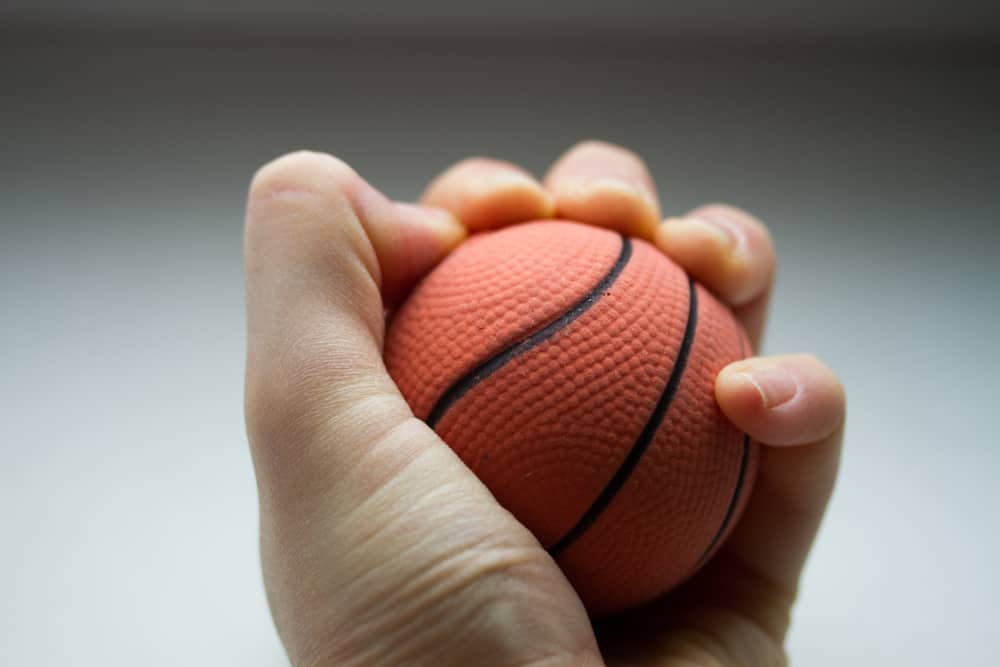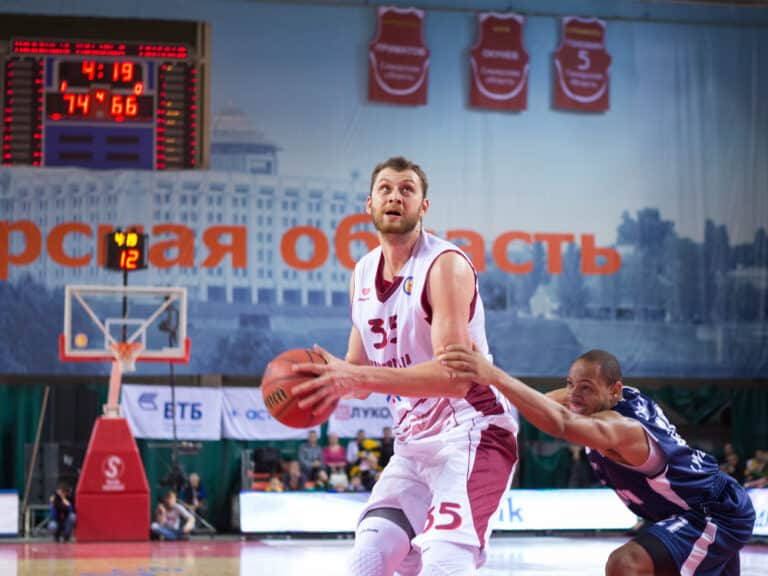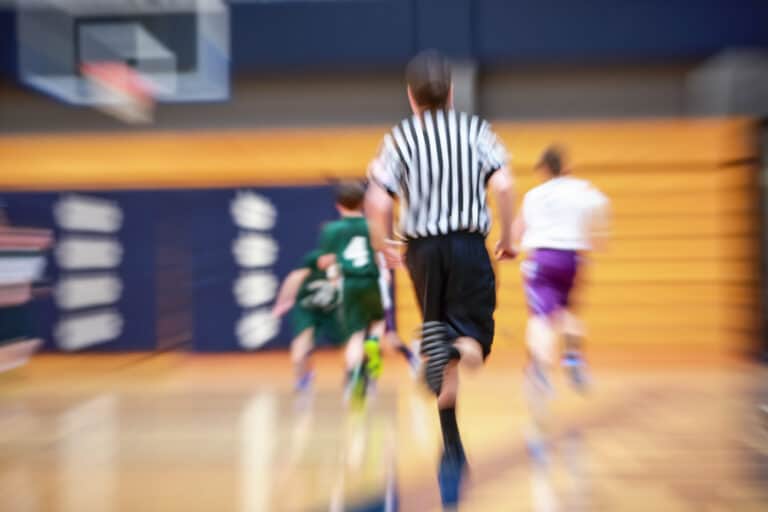Explained: PSI For Basketball (Air Pressure)
If you have ever dribbled more than one basketball, you know some balls bounce better than others. You probably know it has to do with how much air a ball has, among other factors. So, if you’re getting ready for a game, you may want to know the right PSI for a basketball.
The air pressure in a basketball should be between 7.5 to 8.5 PSI. Optimal air pressure levels depend on several factors, such as material, age, use of the ball, and weather. Where everything else is ideal, like an NBA court, all basketballs should have that much air pressure.
Of course, there’s more to a basketball than having the perfect air pressure. For example, how much air do you have to pump until a ball pops? If you’re past that, you may wonder how to fix a burst. First, you must know how much air pressure a basketball needs.
How Much Air Pressure Should A Basketball Have?
You should put 7.5 to 8.5 pounds per square inch of air pressure inside a basketball to have it bounce as best as possible. Colder climates will decrease air pressure inside your ball, and hot weather will increase it, so check your basketball if you haven’t used it in a while.
There’s no need to aim for a perfect 8 PSI of air pressure when you pump your basketball. However, going below or above 7.5 to 8.5 PSI will get you poor results.
When you go below those numbers, your ball will bounce poorly (or not at all). If you keep going past 8.5 PSI, your ball will probably burst when you try to bounce it.
How Can You Tell If A Basketball Has Enough Air?
The best way to know if you’re doing a good job when you pump your basketball is to use a pump with a pressure gauge. That way, you’ll know exactly how much air your ball has. However, you can do a bounce test if you don’t have a pressure gauge.
A bounce test is easy to do. Grab your basketball, put your hands at shoulder height, and drop the ball. If the ball bounces back up to your hips, you’re good to go. Pump more or release some air depending on how high the ball bounces.
Why Do Some Basketballs Feel Heavier?
Two identical basketballs may not weigh the same if one has more air than the other. The more you inflate a basketball, the heavier it feels when you grab it.
At the same time, rising temperatures may increase the air pressure inside your ball, so the same ball may feel heavier over time because of that.
However, different balls are made with different materials, so one may weigh more than the other.
The average basketball weighs around 22 oz, though the weight varies depending on the one you buy and how much air you pump into it.
Can A Basketball Explode?
A basketball can burst or pop if you pump too much air into it. Optimal air pressure levels are between 7.5 and 8.5 PSI. Anything above that number puts your basketball in danger of bursting every time it bounces.
In contrast, not pumping enough air into a basketball will make it bounce poorly, and if it doesn’t have a certain amount of pressure, it won’t bounce at all.
It’s all about finding a balance. You don’t want your ball to be flat enough not to bounce, and, at the same time, you don’t want it to have so much pressure inside it’ll burst the minute it hits the ground.
Why Do Basketballs Pop?
A basketball will usually pop because it has too much air inside. The ball will burst when it hits the ground as you try to bounce it. However, if you continue to pump air past the proper point, it’ll burst right before you.
In extremely rare cases, a basketball will burst seemingly out of nowhere. When that happens, temperature plays a big role in that sudden pop. Air pressure inside a basketball increases as temperature rises, even if you haven’t pumped air into your ball again.
So, if you haven’t dribbled in a long time since winter, it’d be a good idea to check and double-check the air pressure of your basketball before you start playing.
How Much Pressure Does It Take For A Basketball To Pop?
Putting more than 8.5 PSI of air pressure inside a basketball is a sure way to make it pop. Of course, going to 9 PSI won’t make it burst right away, but the higher you go, the more likely you are to lose your ball in one quick burst.
Why do basketballs pop when they have too much air? Because the air inside generates more force than the ball can take when you bounce it.
In other words, a ball can’t take the force it generates past a certain point, leading to a burst. Too much air can bring your basketball to that point.
What Happens If You Pop A Basketball?
Nothing extraordinary happens when a basketball pops. It simply bursts, leading to a loud noise and your basketball deflating. The entire thing is similar to the way a balloon pops. If you’re lucky enough, you may salvage your ball after it bursts.
There’s not much to a basketball bursting besides a loud noise and a big hole in your ball. You’ll probably experience more of a shock when it bursts because of the sound it makes than anything else.
Once the basketball pops, it’ll lose most of (if not all) the air it had inside. It’ll also stay in the place it hit right before bursting because it won’t bounce anymore.
How Do You Patch A Basketball?
The easiest way to fix a burst is to pick a hot knife and put it over the hole in the ball. Once the material starts to melt, you can close the hole. After that, let the basketball cool for ten minutes. Then, pump air into the basketball and try things out.
Besides that inexpensive way of fixing a basketball, you can put some money down and buy a ball repair sealant. This product is by no means expensive, but it’ll cost you a little more than just grabbing a knife and putting it over a fire.

Conclusion
The perfect air pressure for a basketball is between 7.5 to 8.5 PSI. Putting any less air than that will make your ball bounce rather poorly, and going over that number could make it burst as soon as you try to bounce it.







